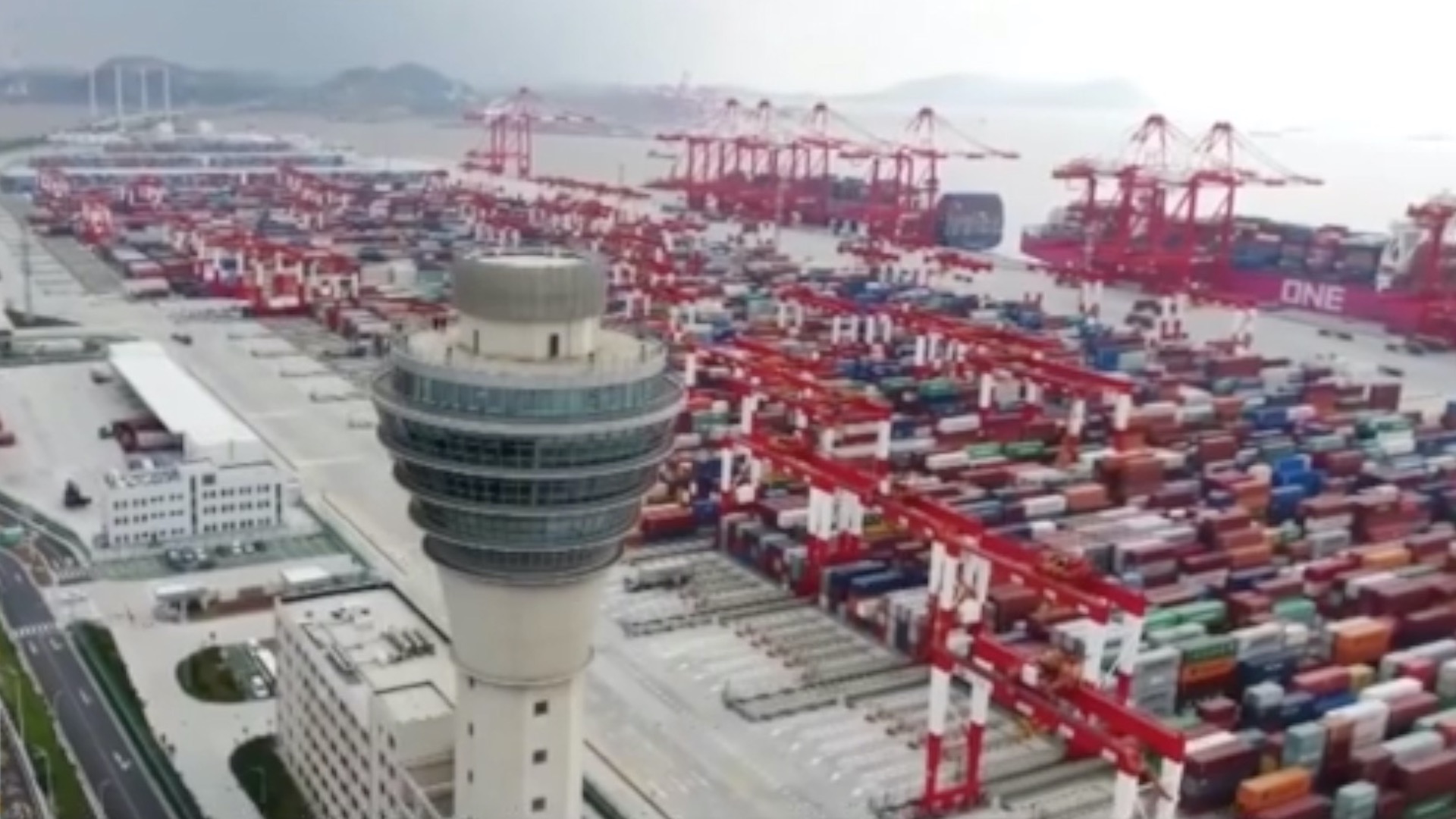04:22

Israel's Haifa New Port, operated by the Shanghai International Port Group (SIPG), officially opened on Wednesday, the first new port opened in the Middle Eastern country for the past 60 years.
It was also the first time Chinese enterprises exported advanced technology and management experience about smart ports to a developed country.
Haifa's travelling crane and storage yard are both operated by an automated system, just like at Shanghai's fourth phase Yangshan Deep-Water Port, which is now the world's biggest automated container terminal, said SIPG vice president Fang Huaijin.
The remote operation system and automated equipment in the new port are also similar to the ones at Yangshan Port, Fang said. But SIPG made adjustments to local conditions in terms of the remote connections to trucks, shipping agencies and freight forwarders.
The port will be the most efficient one in Israel, according to Fang.
Under China's Belt and Road Initiative (BRI), SIPG won the operating rights of Haifa New Port in 2015, beating international competitors. In 2018, SIPG officially launched the construction project.
Construction on the Haifa New Port Terminal project was planned in two phases. The first was an 805.5-meter shoreline terminal that will have an annual container throughput of more than 1 million TEU (twenty-foot equivalent unit). The second phase will be 715.7 meters long with an annual container throughput of 800,000 TEU.
Despite the challenges of the COVID-19 pandemic, it took the company just around three years to finish the first phase of construction on the new port, giving Israel a new gateway to the world.
The country is geographically isolated so the development of ports is crucial to its economic growth, said Izak Blumenthal, CEO of Israel Ports Company.
"With the advanced technology and rich experience provided by SIPG, we hope the new port will not only serve Israel's demands, but also become a regional logistics hub to serve gulf countries, or even the whole Middle East," he said.
The opening of the new port comes at a time when seaports around the world are struggling with shipping congestion.
A recent report by Swiss shipping company Kuehne+Nagel said more than 100 ports around the world are backed up, with some 350 ships waiting to dock and unload.
The delays have led to longer delivery times and higher prices. The hope is that with the improvements SIPG can bring to Haifa's operations, global shipping capacity and mobility will be enhanced.
Previously a great deal of cargo for the Mediterranean had to be unloaded in other ports. But Israel is a gateway to the eastern Mediterranean, a very important logistics hub, and is closely connected with the Shanghai Port.
Currently, a large proportion of cargo from Shanghai has to use surface transport to Europe, according to Fang. With the new port, shipping services will be strengthened and there will be better connections with Shanghai.
BOT model to promote the BRI
The Haifa deal also demonstrates an innovative model for local companies: a Build-Operate-Transfer (BOT) contract. These help Chinese firms export services and capabilities overseas, and better promote the BRI.
Wang Shuming, deputy director of the Shanghai Center for Jewish Studies, said Chinese companies have participated in a great deal of Israeli infrastructure projects, but on most of them, they just handled construction and then turned the projects over to locals.
The cooperation on the new port in Haifa utilizes the BOT model, with construction followed by a 25-year operation arrangement.
It's a win-win deal: on the one hand, China wants to expand the Belt and Road Initiative and build a more efficient and connected logistics network, and the owner has full operational independence. On the other, Israel gets an infrastructure upgrade while retaining full sovereignty over its land and resources.
Wang pointed out that as Haifa's operations mature over the next 25 years, it may lead more countries and regions along the Belt and Road to want to work with Chinese companies on larger infrastructure projects.

